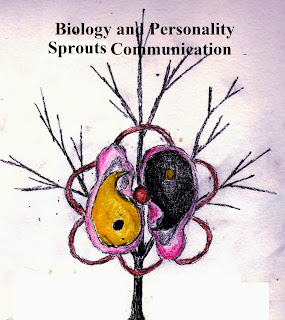Technology has huge impacts on our
daily life and has encouraged new ways of communicating. Such technology is the
natural extension of our biological capacities within the environment. Whether
we are discussing education, government, social relationships, business
development or international relations this technology now dominates our
evolutionary developmental process as a powerful new tool. As this
technological ability grows in society people will naturally start using this
technology in new ways. According to channel expansion theory people will
communicate using these new methodologies in order to expand their capabilities
of reaching out in the environment. This
reaching out creates new influences on human behaviors through the process of imitation.
Most of human behavior is not
within our awareness and we have a hard time reflecting on such behavior. Such
behavior is below our level of conscious understandings (Barkow et. al., 1992).
This means that most people act in manners and patterns without full awareness
that such behavior is driven by a need to achieve certain results in the
environment. Each person is driven by biological urges that manifest itself
in the virtual world.
Our social behavior is learned by copying each other even
when we are not aware we are doing so. Memes, or cultural transmission, are mimicked until they spread to a larger group of people (Henrich, 2004). This
behavior grows and develops aspects of society through various communication
mediums. In other words, technology creates expanding networks of people that
form virtual communities which continue to collect new members.
Virtual communities use these same methodologies
when spreading information to be emulated to other group members. Porra and
Parks (2006) have used a broad model of sustainable virtual communities based
on the properties of natural animal colonies. That such groups take on the form
of animal colonies much like people with physical interaction taking on societal
norms. The same patterns in natural are also seen online when the virtual world
is an extension of the natural order.
Such groups develop and grow in manners that help
them overcome environmental challenges. Virtual groups progress in manners that
copy the underlying logic of biological evolution (McElreath and Boyd, 2007).
Therefore, whether groups are in virtual society or in physical society, they
grow and evolve following the laws of nature. These same entities also
communicate with each other, create societal norms, and adjust to new
influences.
In order to foster this copying activity and
societal structure the human mind has developed new methods to transferring
information in human-to-human interactions. Such development is from the
biological evolutionary push for survival (Kock, 2004). Even with such a push,
it is possible that these same mechanisms are used in the development of
virtual understandings inherent in digital information transference. In other
words, our previous communication methods have adapted to an online
environment.
According to channel expansion theory as people gain
knowledge about particular technologies they are more able to use them for
stronger communication tactics. As users become more accustomed to specific
forms of communication like email, chat, video conference, etc… they also
develop better methods of creating meta-language (embedded language) to
communicate and receive subtle meanings (Carlson and Zmud, 1999). Thus new
forms of communication methods result from the use of virtual technology that expand
communicative effectiveness.
This virtual
technology has made its way into the school systems, our social affairs, and
our businesses. As people become more accustomed to technology, they begin to
use such tools in more efficient methods that expand the bandwidth of such
mediums (Carlson & Zmud, 1994). Through this creation of expanding
communication networks, higher levels of information are transferred to
maintain and develop group members to certain social structures.
In modern times it is possible to develop entire
societies in the virtual world that have certain orders maintained by group norms. These
societies develop their own way of communicating that perpetuates their
methodologies and lifestyles. Virtual colleges are testimony to the creation of
rich information used in new and unique manners with multiple forms of media
that can create higher forms of learning. Such communication tools become more
effective over time developing new methods of satisfying biological needs and maintaining
social rules that extend human capacities. As nations move into the virtual
realms they may find that their societal influence grows by using existing communication
channels in new ways that develop higher forms of communication methodology.
The more people who become accustomed to this technology the more likely they
will be attached to certain societies that resonate with their personal belief systems.
Barkow, J. H., Cosmides, L., and
Tooby, J. (eds.). 1992. TheAdapted Mind: Evolutionary Psychology and the
Generation of Culture,
New York: Oxford University Press.
Carlson, J. & Zmund, R. (1994). Channel
expansion theory: a dynamic view of medial and information richness. Academy of management best papers
proceedings, pp. 280-284.
Carlson, J. and Zmud, R. (1999) Channel
Expansion Theory and the Experiential Nature of Media Richness Perceptions. Academy of Management Journal, 42 (2)
pp. 153-170.
Henrich, J. (2004). “Cultural
Group Selection, Coevolutionary Processes and Large-Scale Cooperation,” Journal
of Economic Behavior and Organization (53:1),
pp. 3-35.
Kock, N. (2004). “The
Psychobiological Model: Towards a New Theory of Computer-Mediated Communication
Based on Darwinian Evolution,” Organization Science (15:3),
pp. 327-348.
Porra, J., and Parks, M. S. (2006).
“Sustainable Virtual Communities: Suggestions from the Colonial Model,” Information Systems and e-Business Management (4:4),
pp. 309-341.
McElreath, R., and Boyd, R. (2007).
Mathematical Models of Social Evolution: A Guide for the Perplexed,
Chicago, IL: The University of Chicago Press.

